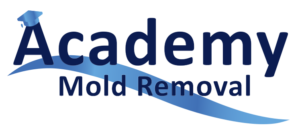How to Remove Mold from Painted Walls with Simple Household Items
September 21, 2024How to Remove Mold from Painted Walls: DIY Solutions for Your Home
September 21, 2024Bathrooms and kitchens are particularly prone to mold due to the high levels of moisture in these areas. If left untreated, mold can cause damage to your walls and even pose health risks. In this guide, we’ll walk you through how to remove mold from painted walls in both bathrooms and kitchens, using simple yet effective methods.
1. Understand the Cause of Mold
Mold thrives in damp environments, making bathrooms and kitchens prime areas for growth. Steam from showers, cooking, and dishwashing can lead to excess moisture on walls, which promotes mold. Addressing the moisture issue is key to learning how to remove mold from painted walls and preventing its return.
2. Gather Your Supplies
You don’t need specialized products to remove mold. Here’s a list of what you’ll need:
- White vinegar or baking soda
- A spray bottle
- Soft sponge or cloth
- A fan or open windows for ventilation
- Gloves and a mask for protection
These items are safe and effective for how to remove mold from painted walls in moisture-prone areas.
3. Use White Vinegar for Bathrooms
Bathrooms tend to have the highest levels of humidity, making white vinegar an ideal solution for how to remove mold from painted walls in this space. Fill a spray bottle with undiluted white vinegar and spray the moldy areas generously. Let it sit for an hour to kill the mold spores. Afterward, wipe the area clean with a damp cloth. The acidity of vinegar will eliminate the mold without damaging your paint.
4. Baking Soda for Kitchens
Kitchens are prone to grease and food particles, making baking soda a great option for cleaning and mold removal. Mix one tablespoon of baking soda with water to form a paste. Apply the paste to the moldy areas and scrub gently with a sponge. Baking soda is effective for how to remove mold from painted walls in kitchens because it not only kills mold but also absorbs odors. Rinse the area with clean water and dry it thoroughly.
5. Rinse and Ventilate the Area
After scrubbing, it’s crucial to rinse the walls with clean water to remove any cleaning residue. Use a dry cloth to thoroughly dry the walls. In both bathrooms and kitchens, good ventilation is essential for preventing mold. Keep a window open or use a fan to reduce moisture levels while cleaning. Proper ventilation is key to preventing future mold growth and maintaining a mold-free environment.
6. Preventing Mold in Bathrooms and Kitchens
To prevent mold from returning, focus on controlling moisture. In bathrooms, install an exhaust fan or leave the window open after showers to let out steam. In kitchens, use the stove’s exhaust fan while cooking and wipe down surfaces regularly to prevent moisture buildup. Consider applying mold-resistant paint in areas with frequent moisture exposure to further protect your walls.
By following these steps, you’ll know how to remove mold from painted walls in bathrooms and kitchens quickly and effectively. Proper cleaning and moisture control will ensure your walls remain mold-free and your home stays healthy.
